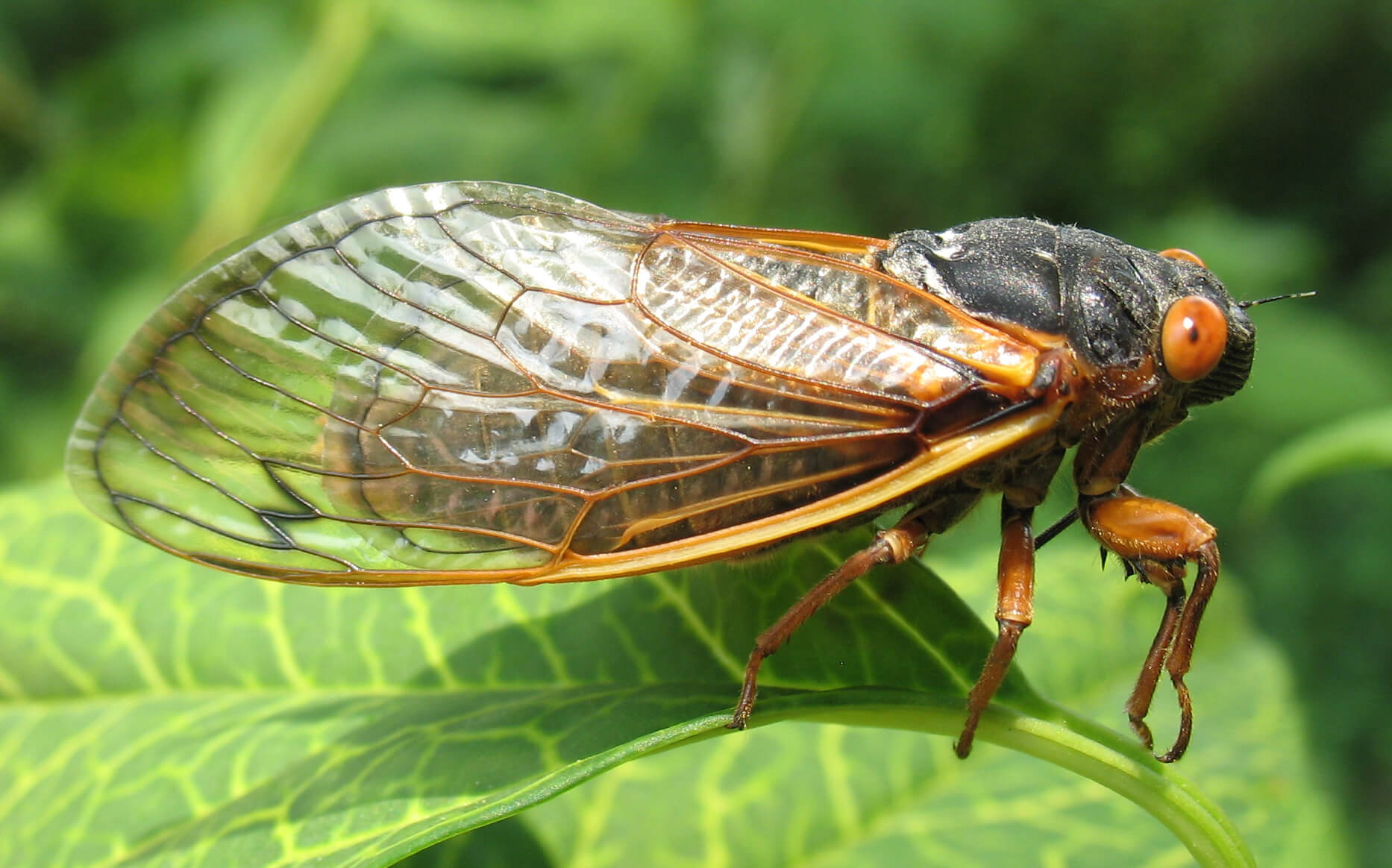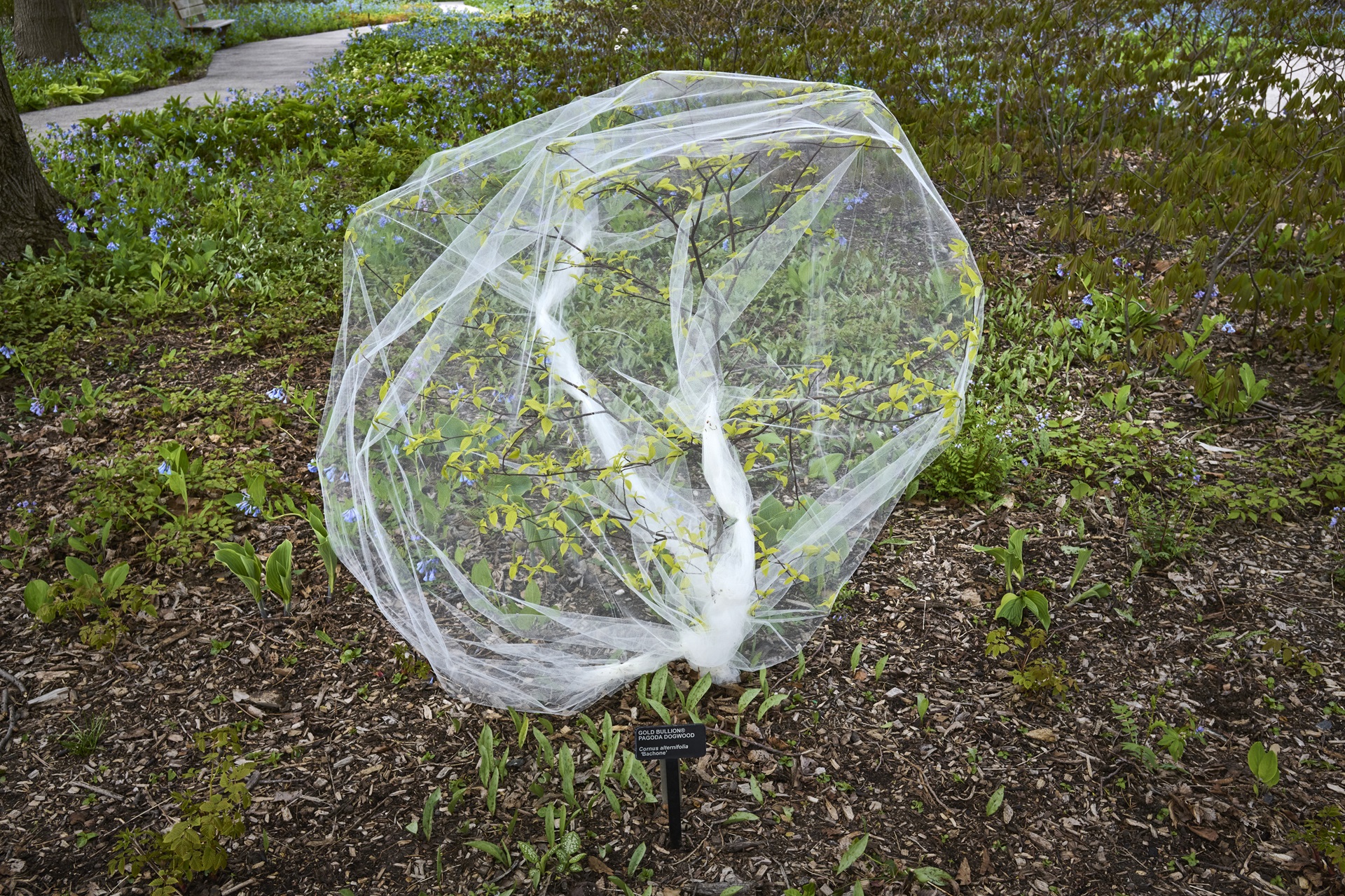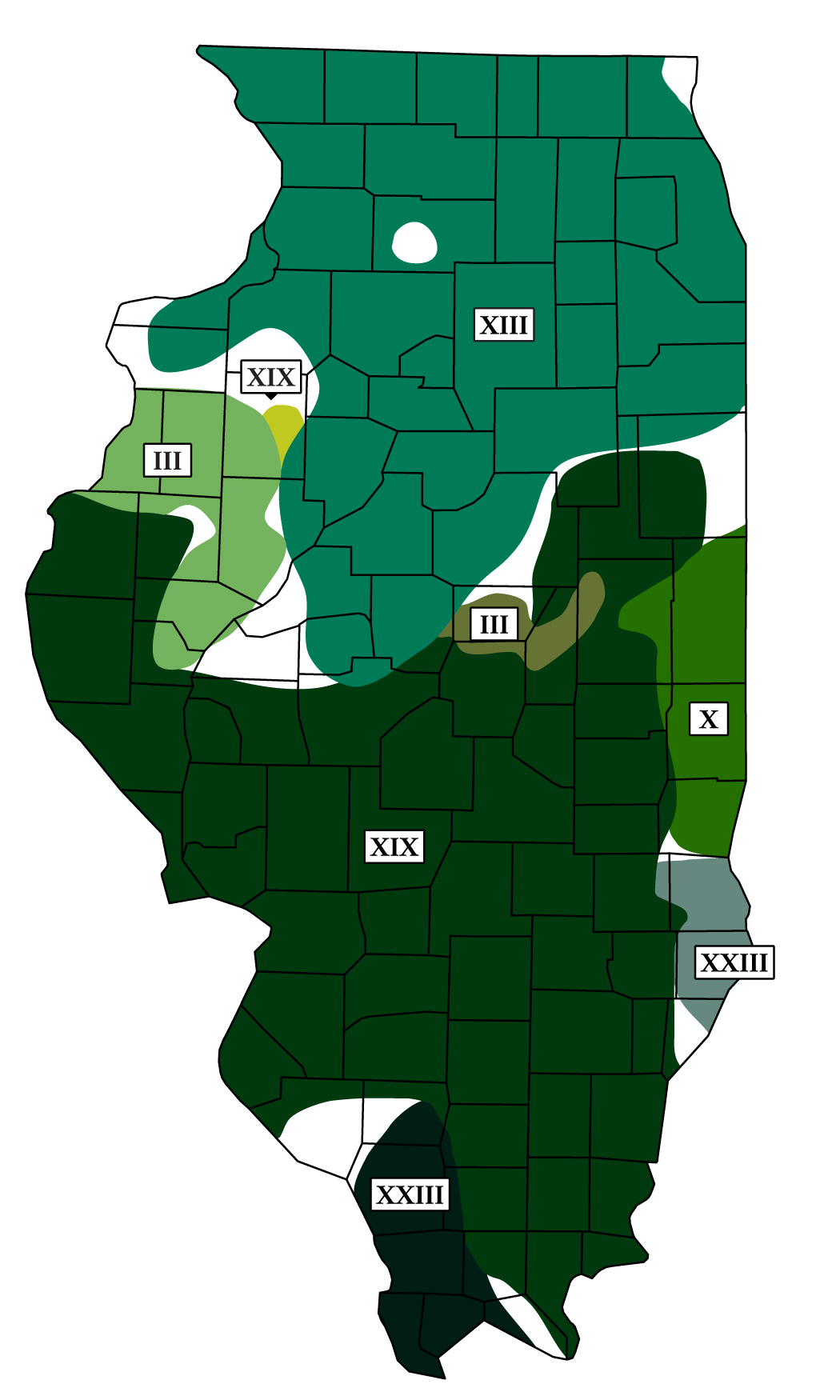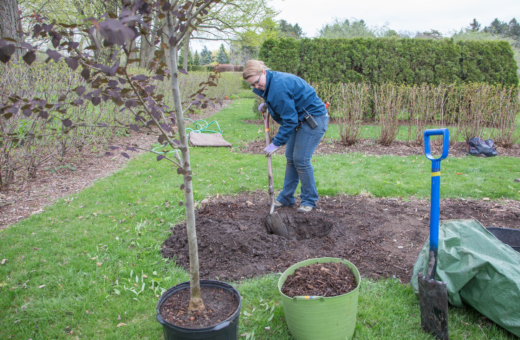May 1, 2024
The great cicada emergence of 2024 is likely to happen soon. In fact, at The Morton Arboretum, a few periodical cicada pioneers had already emerged in late April. The mass of cicada Brood XIII will tunnel out of the soil when its temperature reaches 64 degrees at a depth of 8 inches.
The emergence of periodical cicadas is a remarkable natural phenomenon that only occurs once in 17 years.
For about four to six weeks there will be millions of big, red-eyed insects flying around and making an ear-splitting noise, especially in areas with lots of old trees. They will be annoying, but they are harmless to people and pets; they can’t bite or sting.

Adult periodical cicada
Children are often fascinated by the huge, slow-moving, easy-to-catch bugs. By the end of June it will all be over.
While the insects can’t harm people, pets, plants, and healthy mature trees, there is some risk of damage to young and other vulnerable trees and shrubs. After the cicadas pair up through those ear-splitting mating calls, the females make small slits in slender twigs and lay their eggs there. This is not a problem for trees that are mature, with big branches and plenty of twigs to spare. However, small or newly planted trees, whose branches are mostly twig-sized, are at more risk of lasting damage.
The best way to protect these young trees is to wrap their branches in fine-mesh netting before early May. Commercial insect netting can be purchased online or from some garden centers and landscape suppliers. Tulle—the nylon or polyester mesh used to make ballerina tutus, sold in fabric and some hobby stores—works well.

For more details on how and when to wrap trees and other useful information about the cicadas, see the Arboretum’s 2024 cicada information page. It includes an extensive FAQ.

Tulle netting on a shrub in the Ground Cover Garden

Tulle netting on young trees
Homeowners, landowners, and communities may want to consider postponing tree planting until after the cicadas have subsided in late June, or until autumn. If you do plant trees in spring, plan to wrap them in netting.
Since the cicadas do not eat plants, they will do no harm to the flowers and new leaves of springtime gardens. They also bring a benefit: After they mate, they will die and their bodies will break down into the soil, adding free fertilizer for lawns, gardens, and forests.
There will be a lot of cicadas: In heavily wooded areas, scientists say, there can be as many as 1.5 million cicadas per acre. But there will not be more cicadas this year than there usually are in a 17-year emergence. It is true that two synchronized periodical cicada groups, or broods, are emerging simultaneously in 2024. However, those two broods mostly inhabit different geographic areas of the United States. In the Chicago area, there will be only one brood emerging, Brood XIII of 17-year cicadas.

Active Illinois periodical cicada broods
The cicadas are emerging earlier this year than first anticipated because the soil has warmed quickly. The last time, in 2007, the major emergence at the Arboretum took place May 29.
The cycle of periodical cicada emergences has been going on for many thousands of years in the eastern United States. The insects emerge every 17 years in northern regions and every 13 years in more southern areas. Native trees evolved with cicadas, making them partners in a natural ecosystem where they flourished together long before people arrived. The cicadas are native insects and we have moved into their territory.
Their simultaneous emergence in vast numbers is a survival strategy for their species. When millions of cicadas are all active at the same time, there are too many to eat. Predators such as squirrels, skunks, raccoons, foxes, coyotes, and many kinds of birds will gorge themselves, but enough of the cicadas will escape to mate and lay eggs.
Scientists are fascinated by the life cycle of cicadas. These insects spend 99 percent of their lives living underground in nymph form, feeding on sap from tree roots, and only live above ground as adults for a few weeks. It’s known that the nymphs emerge in response to rising soil temperature, but researchers still aren’t sure how they all know to emerge at once. Their mysteries are captured by their scientific genus name: Magicicada.
To learn more about what to expect from the cicadas’ emergence and how to protect young trees, see the FAQ. If you have specific questions, consult the Plant Clinic. Watch the Arboretum website for more information on cicada-related events.



